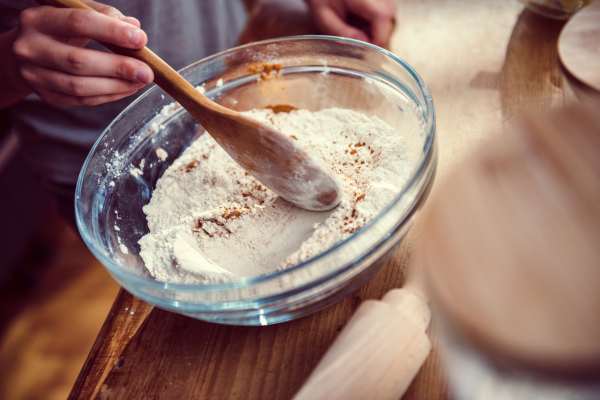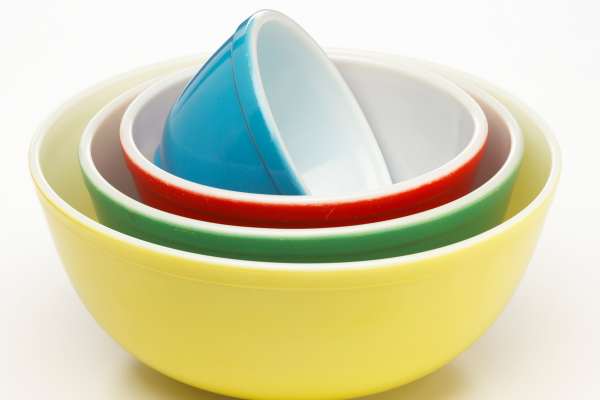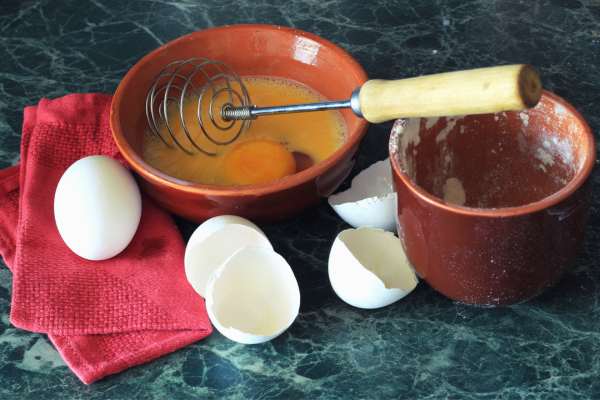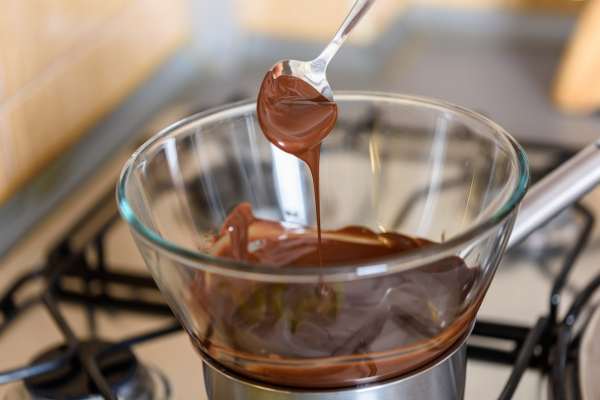Mixing bowls, essential tools In any kitchen, serve A variety of purposes that are integral To The cooking And baking process. These versatile containers are used For combining ingredients, whether you’re whisking together A salad dressing, blending batter For a cake, or tossing vegetables with spices. They come In different materials like glass, metal, or plastic, and In various sizes To accommodate different quantities of ingredients. The design of mixing bowls, often with A rounded bottom, makes It easier to mix ingredients thoroughly, ensuring A consistent result In your culinary creations.
What Are Mixing Bowls?

Mixing bowls are fundamental kitchen utensils that play A crucial role In various culinary tasks. They are deep, round vessels designed To hold ingredients while they are being Mixed, Whisked, Or Stirred. Available in An array of sizes and materials like stainless steel, glass, ceramic, and plastic, These Containers cater To different needs and preferences. Some are heat-resistant, others come with lids For storage, and many are nestable For easy storage. Their versatility extends beyond mixing, As they can be used For marinating meats, serving salads, or even As double boilers when placed over a pot of simmering water.
Why Are Mixing Bowls Used?

The primary use of mix bowls Is To Provide a large, contained space For combining ingredients efficiently and effectively. They are indispensable For baking tasks, such as mixing dough or batter, and for preparing dressings And marinades. The high sides of the Containers prevent spillage during vigorous mixing, And their varied sizes allow for the preparation of both large And small quantities. Additionally, mixing bowls Can double as serving dishes, showcasing salads, fruits, or other mixed items. Their simplicity In design belies their multifunctionality, making them A kitchen staple for both amateur cooks And professional chefs alike.
Types Of Mixing Bowls
1. Glass Bowls

Glass mixing bowls are highly valued For their aesthetic appeal and practicality. They are typically made from tempered glass, making them resistant To breaking And able To withstand thermal shock. This means they Can be used In The microwave, refrigerator, and even the oven, offering versatility In food preparation. Glass Containers are non-reactive, ensuring that they don’t absorb odors or flavors and don’t react with acidic ingredients, making them ideal For marinades And doughs. Their transparency Is a bonus, allowing cooks To easily observe The mixture from all angles. However, they Can be heavier and more fragile than other types, Requiring careful handling.
2. Stainless Steel Bowls

Stainless steel mixing bowls are A popular choice In Professional kitchens due To their durability and resistance To rust and corrosion. Lightweight yet sturdy, They are ideal For heavy-duty use And can withstand drops And knocks without denting easily. These bowls are excellent conductors of temperature, making them suitable For recipes that require temperature control, such As tempering chocolate. Stainless steel Containers are often preferred for their ease of maintenance, As they’re dishwasher safe And not prone To staining or absorbing odors. However, their opaque nature Can be a drawback As it prevents seeing The mixture from the outside, and they cannot be used In microwaves.
3. Ceramic Bowls

Ceramic Mixing Bowls Offer A Blend Of Functionality And aesthetic charm. They are made from clay that’s been kiln-fired, often with a decorative, glazed finish. This type of bowl Is appreciated For its weightiness, which provides stability And minimizes movement during mixing. Ceramic Containers are great For maintaining the temperature of ingredients, keeping cold items cool And hot items warm for extended periods. They are also non-reactive and won’t absorb odors or flavors, making them suitable For a variety of mixing tasks. However, they are breakable and can chip or crack If dropped, And their weight might be a disadvantage For some users.
4. Plastic Bowls

Plastic mixing bowls are A Lightweight and affordable option. They are usually made from materials like polyethylene or polypropylene, which are durable and resistant To cracking. One of The biggest advantages of plastic bowls Is their portability and ease of handling, especially useful For outdoor cooking or In settings where breakage Is A concern. Many plastic Containers come with lids, making them convenient For storing leftovers. However, they Can absorb odors and stains over time, especially when used with acidic or strongly colored ingredients. While they are not suitable For use in ovens, many are microwave and dishwasher safe, though it’s always best To check the manufacturer’s guidelines.
Choosing The Right Mixing Bowl
Selecting The right mixing bowl For your cooking needs involves considering factors like material, size, and intended use. Glass bowls are great For acidic ingredients and Can double as serving dishes due To their attractive appearance. Stainless steel Containers are ideal For heavy-duty mixing And are preferred In professional settings. Ceramic bowls offer temperature retention and are perfect For recipes that require gentle mixing. Plastic Containers are lightweight, making them suitable For outdoor use And everyday casual cooking.
Uses of Mixing Bowls in Cooking
1. Mixing Batters and Doughs

One of the primary uses of mix bowls Is For preparing batters and doughs. Whether You’re baking bread, making pancakes, or preparing cake batter, A sturdy bowl Is essential For mixing ingredients evenly. The high sides of the bowl prevent spillage when mixing vigorously. Glass or stainless steel Containers are often preferred for their stability And ease of cleaning. The choice of bowl size Is crucial, As it should be large enough To allow ample space For mixing without overflowing.
2. Salad Tossing

Its are not just limited To baking; they are also perfect For tossing and serving salads. A large bowl provides enough space To mix greens and other ingredients thoroughly, ensuring that dressings And seasonings are evenly distributed. Glass And ceramic bowls are particularly good For this purpose, As They can also be used as attractive serving dishes. Their non-reactive nature ensures that acidic dressings don’t interact with The bowl’s material. Salad tossing In a bowl that’s too small can lead To uneven coating of dressing And ingredients spilling out.
3. Uses in Baking

Mixing bowls are indispensable In The baking process. They are used For a range of tasks, from creaming butter and sugar to whipping up eggs for cakes. In yeast baking, They provide A Suitable environment for dough to rise, especially If The bowl is made of glass or ceramic, which maintains A steady temperature. The wide and deep shape of mix bowls Is perfect for kneading dough or folding delicate batters, allowing ample room For movement and minimizing flour or liquid spillage. Additionally, Containers with a pouring spout Can be particularly useful For easily transferring batter into baking pans.
4. Mixing Dry Ingredients

Before combining with wet ingredients, dry ingredients like flour, sugar, baking powder, And spices are often mixed together In a bowl. This step Is crucial in baking For ensuring even distribution of leavening agents And flavorings throughout The Batter or dough. A large, shallow bowl Is ideal for this purpose, allowing for easy whisking or stirring to thoroughly blend the ingredients. Stainless steel or plastic bowls are often preferred For mixing dry ingredients due To their lightweight nature, making them easy to handle and maneuver during the mixing process.
5. Whisking Eggs And Cream

Mixing Containers are essential For whisking eggs and cream, tasks that require space And a certain depth To prevent spillage. For whisking eggs, whether For omelets or baking, A medium-sized bowl usually suffices. The rounded bottom of The bowl allows for easy movement of The whisk, ensuring that The Eggs are beaten evenly. In The case of whipping cream, A larger bowl is often needed As cream expands In volume when whipped. Stainless steel bowls are preferred for whipping cream because they can be chilled beforehand, which helps In achieving the desired consistency of The whipped cream.
6. Melting Chocolate

Melting chocolate In A mixing bowl Is a common practice, especially when a double boiler is required. A heatproof bowl, such as glass or metal, Is placed over A pot of simmering water, ensuring that The bottom of the bowl does not touch The water. This indirect heat allows The chocolate To melt evenly without burning. The size of The bowl should be appropriate to the amount of chocolate being melted And should fit snugly on top of the pot To prevent steam from escaping. This technique Is essential In baking and confectionery, where smoothly melted chocolate is key To the quality of the final product.
Specialty Mixing Bowls
1. Bowls with Lids
Mix bowls with lids offer A dual function of mixing And storing. These bowls are especially handy For Preparing mixtures that need to be refrigerated, such As doughs or marinades, without The need to transfer them To another container. The lids provide An airtight seal, keeping The contents fresh And preventing any odors from the refrigerator affecting the mixture. They also help In reducing food waste by allowing leftovers To be easily stored. Available In various materials like plastic, glass, or stainless steel, these bowls are versatile and practical For both preparation and storage purposes In the kitchen.
2. Bowls with Measurements
Bowls with built-in measurements are A Boon for recipes that require precision. These types of Containers typically have measurement markings along The Inside or outside, allowing cooks To measure and mix ingredients in The Same container, thus reducing cleanup And saving time. This feature Is particularly beneficial for baking, where exact measurements are crucial. These Containers are usually made of glass or high-quality plastic To ensure that The markings are clear And durable. They are ideal For cooks who appreciate the convenience of measuring and mixing In one step, ensuring accuracy and efficiency in The kitchen.
DIY and Creative Uses of Mixing Bowls
It are not just confined To kitchen use; they can be repurposed For various DIY and creative projects. For instance, they Can serve as molds for making large, round ice sculptures or As containers for crafting homemade candles. In the realm of home decor, A stylish mixing bowl can be transformed into A chic centerpiece or used as A unique planter For small indoor plants. Moreover, they can act as organizational tools, holding items such. As yarn For knitting or serving As A catch-all for keys And small accessories. These versatile Containers open up A myriad of possibilities for creative And practical uses beyond their culinary functions.
Can Mixing Bowls Go In The Microwave?
The microwave compatibility of mix bowls depends on The material they are made from. Glass And some plastic mix bowls are generally microwave-safe. But it’s crucial To check For a microwave-safe label or symbol on The bowl. Stainless steel And metallic Containers should never be used In A microwave, As metal can cause sparks and damage The appliance. Ceramic Containers can often be microwaved, but they should not have any metallic paint or trim. It’s always advisable to refer to the manufacturer’s instructions To ensure The Safe use of mixing Containers In the microwave.
Conclusion
Mixing bowls are An indispensable tool In The kitchen, offering versatility that extends beyond their primary use of combining ingredients. From baking To salad tossing, their utility Is unmatched. Furthermore, their creative applications In DIY projects add an extra layer of value. However, it’s important To be mindful of the material of your mixing Containers, especially when It comes to using them In a microwave. Whether For cooking, storage, or creative purposes, these Containers are A Kitchen essential that can adapt To a multitude of tasks, making them A valuable investment for both cooking enthusiasts And professionals alike.
